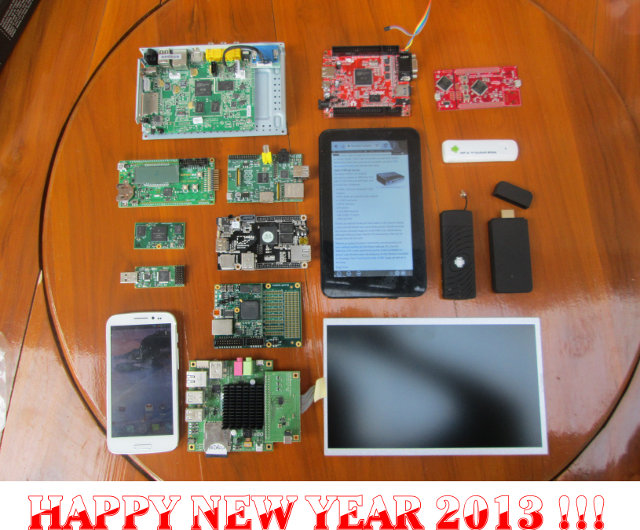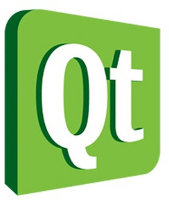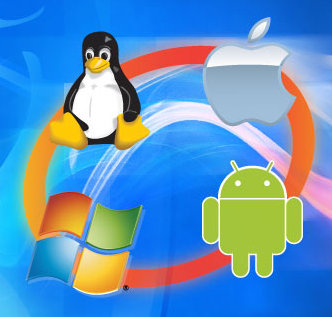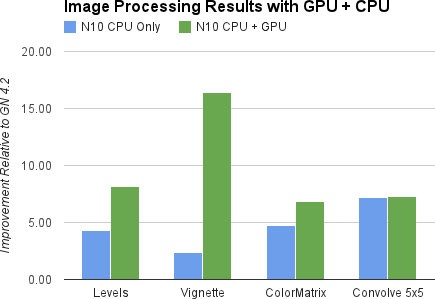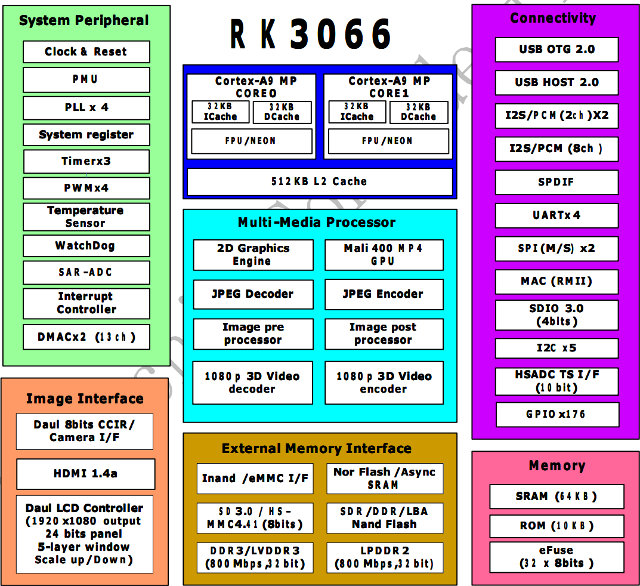This is the last day of the year, so it’s probably a good time to look back and see what interested people on this blog. This has been a banner year for low cost ARM devices and boards starting with the Raspberry Pi, then MK802 and the new mini PCs / HDMI TV dongles / PCs-on-a-stick (whatever you want to call them) that came after, always cheaper and faster. Those low cost devices have in turn made people really interested in ARM Linux, and lots of development on those little devices and boards started. The top 10 posts of 2012, according to page views, reflect just those trends: 74 USD AllWinner A10 Android 4.0 Mini PC (May 2012) – MK802 started the whole “low cost mini PCs” craze, and drove the most traffic to this blog this year. People got excited about the price, form factor, and the possibility to […]
Qualcomm Vuforia SDK 2.0 Augmented Reality Development Kit Leverages the Cloud
Qualcomm has just announced their new Vuforia SDK 2.0 for Android and iOS to enable developers to create augmented reality applications for those platforms. Key new features include: Cloud Recognition Service – Up to now developers were limited to about 100 images on the target device due to limited storage space, but thanks to the Cloud recognition service, apps can “see” more than 1 million images, creating new mobile augmented reality (AR) opportunities for retailers and publishers. For example, every product (or image) in a store can bring associated content from the retailer’s website and render it directly on top of the product (or image). Watch American Apparel AR app video demo for an example of such app. The Cloud Recognition service requires a Vuforia Web Services account which is free for developers (Limited to 1,000 images, 3000 events per months), but is subject to fees for businesses. User-Defined Targets […]
Digia and the Qt Project Release Qt 5.0
The Qt Project and Digia have announced the release of Qt 5.0, which is available via Qt 5.0 page on qt-project.org, or via qt.digia.com/qt5 for commercial customers. Qt 5.0 comes as a full SDK package including Qt 5 framework, Qt Creator 2.6.1, examples and full documentation. Qt 5.0 is available in source code and binary format for Linux (64 and 32 bit), Mac OS X (10.7 and 10.8), and Windows. You can read more about the main changes and new features compared to Qt 4.8, on my previous blog post about Qt 5 Alpha. A video showcasing some of the key features of Qt 5 has been uploaded to Youtube. The video above is actually a screen capture of a Qt 5 based application using Qt Quick, OpenGL and WebKit, running in a Mac. Audio has been added with iMovie application. You can try this Qt 5 Launch Demo by yourself by […]
Collabora and Fluendo Release GStreamer SDK for Android
Collabora and Fluendo have recently announced the availability of GStreamer’s Software Development Kit for Android, which allows developers to create multimedia playback applications for Android smartphones and tablets using Gstreamer and the Android NDK.. The GStreamer SDK for Android targets Android 2.3.1 Gingerbread or higher (API Level 9 or greater). However, due to some of the restrictions of previous versions of Android, some features such as hardware acceleration are only available on Android 4.1 Jelly Bean (API Level 16 up). Normally, you’d need the GStreamer SDK which can be installed on Linux (Ubuntu, Fedora and Debian), Windows (XP/Vista/7/8) and Mac OS X (10.6 to 10.8). But for developing Android applications using Gstreamer, you don’t. What you do need first is a typical Android development environment with the latest Android SDK, the latest Android NDK, and optionally, but recommended, the Eclipse IDE with Android ADT and NDK plugins. Once everything is […]
Jolla Unveils Sailfish OS based on Meego and Sailfish SDK
Last July, a company called Jolly announced it would design, develop and sell smartphones based on the Meego operating system. This is now closer to reality as a demo has been showcased running on Nokia N950, except the operating system is now called Sailfish OS. Internally, Sailfish OS is built on top of the Mer project and Qt. The UI is built with QML and QtQuick and the standard QtMobility APIs are supported. For software development, you’ll need to use a special version of QtCreator. The development flow looks very similar to what you would do to develop applications for Symbian or Harmattan phones. More precisely, the Sailfish SDK consists of QtCreator, a virtualised Mer Platform SDK and Sailfish components. Code is developed in Qt-Creator on the host device, then the code is passed to the virtualised Mer SDK where it compiles inside the Virtual Machine. If you want to […]
Android Jelly Bean 4.2 SDK, Source Code and Binary Images Are Now Available
As the Nexus 4 smartphone and Nexus 10 tablet became available for purchase yesterday, Google released Android 4.2 SDK for developers and pushed Android 4.2 to AOSP. The Android 4.2 (Jelly Bean) SDK platform (API level 17) brings the following key improvements: Performance – Renderscript computation can be run directly in the GPU on the Nexus 10. This is a first since Exynos 5250 is the first ARM processor capable of supporting GPGPU (via Mali-T604 GPU). See the chart of the right showing results between CPU and CPU+GPU computation of some multimedia benchmarks. Lock screen widgets – Users can now place interactive lock screen widgets directly on their device lock screens. This only requires a small update to adapt existing widgets to run on the lock screen. Daydream – An interactive screensaver mode that can be used when the device is charging or docked to a desk dock. Better external […]
Qt Creator 2.6 Release and Qt for Android (Necessitas) Merged to The Qt Project
Qt Creator Version 2.6.0 has been released yesterday. The most notable change is the introduction of “Kits” to replace “Targets” that were used in previous versions of Qt Creator. Previously, “Targets” such as Desktop or Remtoe Linux were added to a project’s configuration in order to use predefined configurations. “Kits” extend the use of “Targets” and contain settings for which device type to develop for, the sysroot, the compiler, the debugger and the Qt version to use, and possibly even more settings. Users can define their own “Kits”, which should facilitate control of build and run environment and projects sharing. Other changes include full screen support on Mac OS Lion and later, numerous fixes and additions to the qrc file editor, direct rebuilding and cleaning of .pro file based subprojects, more C++11 fixes, and more. On the platform side, QNX/Projects support was added, but Symbian (no maintainer) and Meego (due to […]
Rockchip RK3066/RK30xx Processors Documentation, Source Code and Tools
Rockchip RK3066 (part of RK30xx family) is a Chinese dual ARM Cortex A9 SoC targeting multimedia products such as tablets (e.g. Cube U30GT), mini PC (e.g UG802, MK808) and in theory set-top boxes, but I can’t find any products based on this Rockchip processor. It seems mini PCs/ HDMI TV sticks have taken over this market. RK3066 Processor The processor features two ARM Cortex A9 clocked at up to 1.6 Ghz with a quad core Mali-400MP GPU. It can support 1080p (3D) encoding/decoding, provides HDMI 1.4a, VGA, composite, component and LVDS video outputs (Dual display support), USB 2.0 Host and OTG ports, a MAC interface (Ethernet), and much more… Here are the key features of Rockchip RK3066 processor: Dual Core A9 + Quad Core Mali-400MP GPU 2 banks, 8/16 bit Nor flash / SRAM interface 8 banks, 8/16 bit async NAND flash, LBA NAND flash and 8-bit sync ONFI NAND […]


